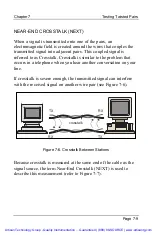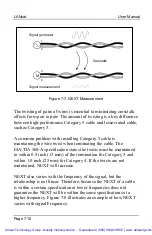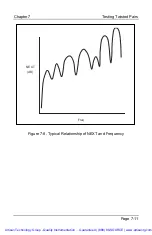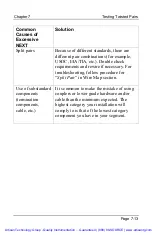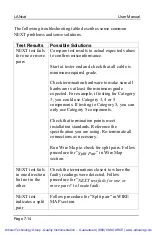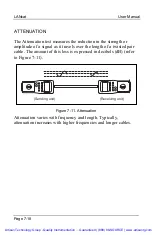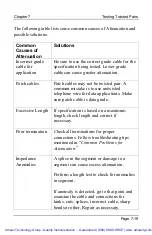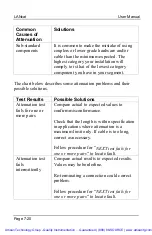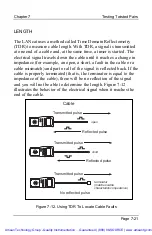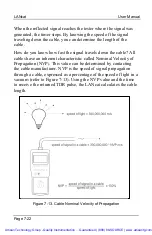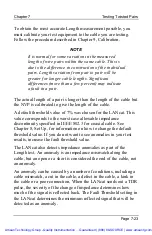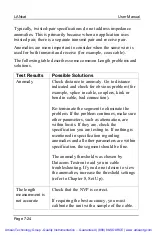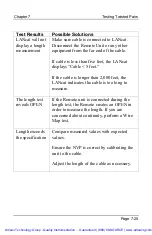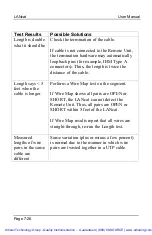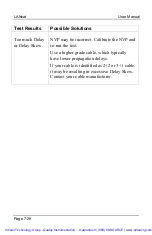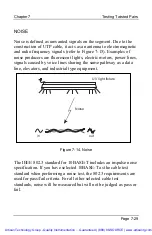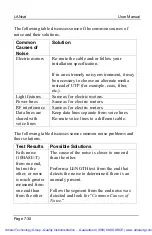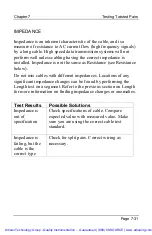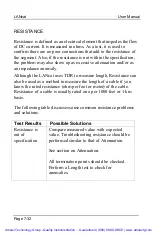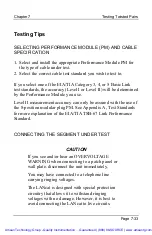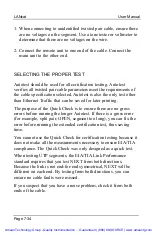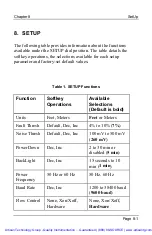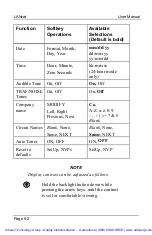
Chapter 7
Testing Twisted Pairs
Page 7-23
To obtain the most accurate Length measurement possible, you
must calibrate your test equipment to the cable you are testing.
Follow the procedure described in Chapter 9, Calibration.
NOTE
It is normal for some variation in the measured
length of wire pairs within the same cable. This is
due to the difference in construction of the individual
pairs. Length variation from pair to pair will be
greater for longer cable lengths. Significant
differences (more than a few percent) may indicate
a fault in a pair.
The actual length of a pair is longer than the length of the cable but
the NVP is calibrated to give the length of the cable.
A default threshold value of 7% was chosen for the LANcat. This
value corresponds to the worst case allowable impedance
discontinuity specified in IEEE 802.3 for coaxial cable. See
Chapter 8, Set Up, for information on how to change the default
threshold value. If you do not want to see anomalies in your test
results, increase the fault threshold value.
The LANcat also detects impedance anomalies as part of the
Length test. An anomaly is an impedance mismatch along the
cable, but an open or a short is considered the end of the cable, not
an anomaly.
An anomaly can be caused by a number of conditions, including a
cable mismatch, a cut in the cable, a defect in the cable, a kink in
the cable or a poor connection. When the LANcat sends out a TDR
pulse, the severity of the change of impedance determines how
much of the signal is reflected back. The Fault Threshold setting in
the LANcat determines the minimum reflected signal that will be
detected as an anomaly.
Artisan Technology Group - Quality Instrumentation ... Guaranteed | (888) 88-SOURCE | www.artisantg.com

